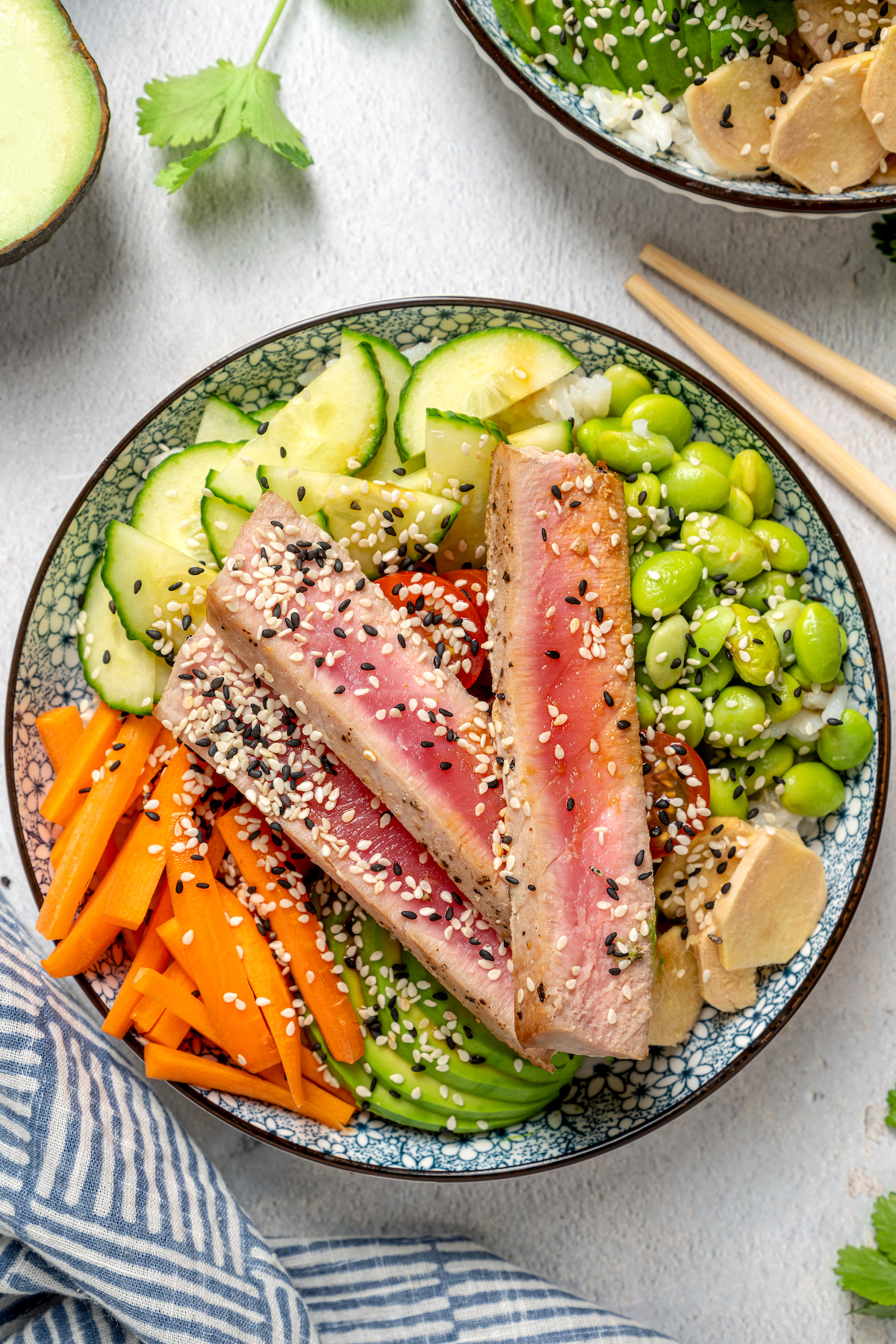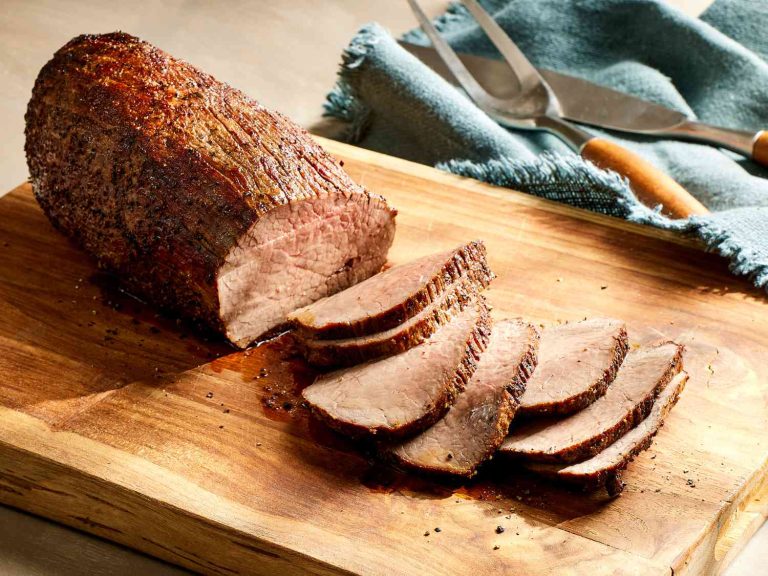Sesame Seared Tuna: A Gourmet Guide to This Healthy and Delicious Dish
Sesame seared tuna combines influences from Japanese and Hawaiian cuisines, blending traditional searing techniques with sesame’s nutty essence. Over recent decades, its popularity has surged in the US, especially in high-end restaurants and trendy eateries. The dish appeals to those seeking a balance of simplicity and gourmet sophistication, making it a favorite among food enthusiasts.
Primary Ingredients and Flavor Profile
The primary ingredient, fresh tuna, usually ahi or yellowfin, provides a robust, meaty texture when seared. Sesame seeds, both white and black, add a toasted crunch and distinctively nutty flavor. Soy sauce, often used in marinades, introduces a salty, umami depth. Mirin and rice vinegar contribute sweetness and acidity. Green onions and sesame oil enhance the dish with fresh, aromatic notes, completing its layered flavor profile.
Health Benefits of Sesame Seared Tuna
Nutritional Highlights
Sesame seared tuna offers an array of nutrients that contribute to a healthy diet. Tuna, a lean protein source, contains essential amino acids important for muscle repair and maintenance. Each 3-ounce serving provides roughly 24 grams of protein with minimal fat content. Omega-3 fatty acids, which promote cardiovascular health and reduce inflammation, are found in significant amounts. The sesame seeds add dietary fiber, calcium, and magnesium, supporting bone health and digestion. Additionally, this dish is rich in vitamins B12 and D, boosting overall metabolic function and immune system efficiency.
Best Practices for a Balanced Diet Involving Fish
When incorporating sesame seared tuna into your diet, follow best practices to ensure balance and variety. Consume fatty fish like tuna at least twice weekly to maximize omega-3 fatty acid intake. Pair the dish with a variety of vegetables, like leafy greens, peppers, and avocados, to complement its nutrient profile. To avoid excessive mercury levels, diversify with other seafood options, including salmon, mackerel, and sardines. Choose fresh, high-quality tuna from reputable sources to minimize the risk of contaminants. Integrate whole grains, such as quinoa or brown rice, for added fiber and nutrients, making your meal more balanced and complete.
How to Prepare Sesame Seared Tuna
Choosing the Right Tuna
Selecting the best tuna is essential for achieving a flavorful sesame seared tuna dish. Opt for sushi-grade tuna, ideally Ahi or Yellowfin, to ensure freshness and quality. Verify the color; you’re looking for a deep red hue, as this indicates freshness. Avoid brownish or dull spots, as these can denote older fish. Buy from a reputable fishmonger or market known for high-quality seafood, as reliability minimizes health risks.
- Prepare Ingredients: Gather 2 tuna steaks, 2 tablespoons sesame oil, 2 tablespoons soy sauce, 1 tablespoon rice vinegar, black and white sesame seeds, and any additional seasonings preferred.
- Marinate Tuna: Combine sesame oil, soy sauce, and rice vinegar. Place the tuna steaks in the marinade for at least 15 minutes, flipping halfway to ensure even coating.
- Coat Tuna in Sesame Seeds: Remove the tuna from the marinade. Pat dry with paper towels. Press both sides of each steak into a plate of mixed black and white sesame seeds until fully coated.
- Heat Skillet: Use a non-stick skillet. Heat over medium-high heat. Add a small amount of sesame oil to the pan to prevent sticking.
- Sear Tuna: Place the sesame-coated tuna in the hot skillet. Sear each side for about 1-2 minutes, depending on thickness, to achieve a rare center with a crisp exterior. Adjust cooking time for a more cooked center.
- Rest and Serve: Transfer the seared tuna to a cutting board. Let it rest for a couple of minutes. Slice thinly against the grain for the best texture and visual appeal. Serve immediately, pairing with suggested sides like steamed vegetables or a fresh salad.
Serving Suggestions
Accompaniments
Pair sesame seared tuna with fresh, vibrant accompaniments to elevate the dish. Steamed or sautéed vegetables (e.g., asparagus, bok choy) complement well by adding contrasting textures. Serve with a side of jasmine rice or quinoa to provide a neutral base. Include pickled ginger and a wasabi aioli for a flavorful kick. Add seaweed salad for an authentic touch and a burst of umami flavor. Offering soy sauce or a ponzu dipping sauce enhances the taste, providing a balance of savory and tangy notes.
Presentation Tips
Present sesame seared tuna artistically to enhance its visual appeal. Slice the tuna into thin, even pieces for a refined look. Arrange the slices in a fanned-out pattern on a white plate to highlight the vibrant pink color. Garnish with a sprinkle of sesame seeds for extra texture and aesthetic. Add microgreens or edible flowers to the dish for a pop of color and elegance. Serve sauces in small ramekins to keep the plate clean and sophisticated. Using contrasting colors and minimalist plating techniques underscores the gourmet nature of the dish.
Conclusion
Sesame seared tuna is a dish that effortlessly combines simplicity with gourmet sophistication. By following the steps outlined, you can create a meal that’s not only visually stunning but also packed with nutritional benefits. Remember to select high-quality tuna, marinate it properly, and pay attention to the searing process for the best results. Pair it with fresh accompaniments and thoughtful garnishes to impress your guests and elevate your dining experience. Enjoy the delightful blend of flavors and textures that sesame seared tuna brings to your table.






